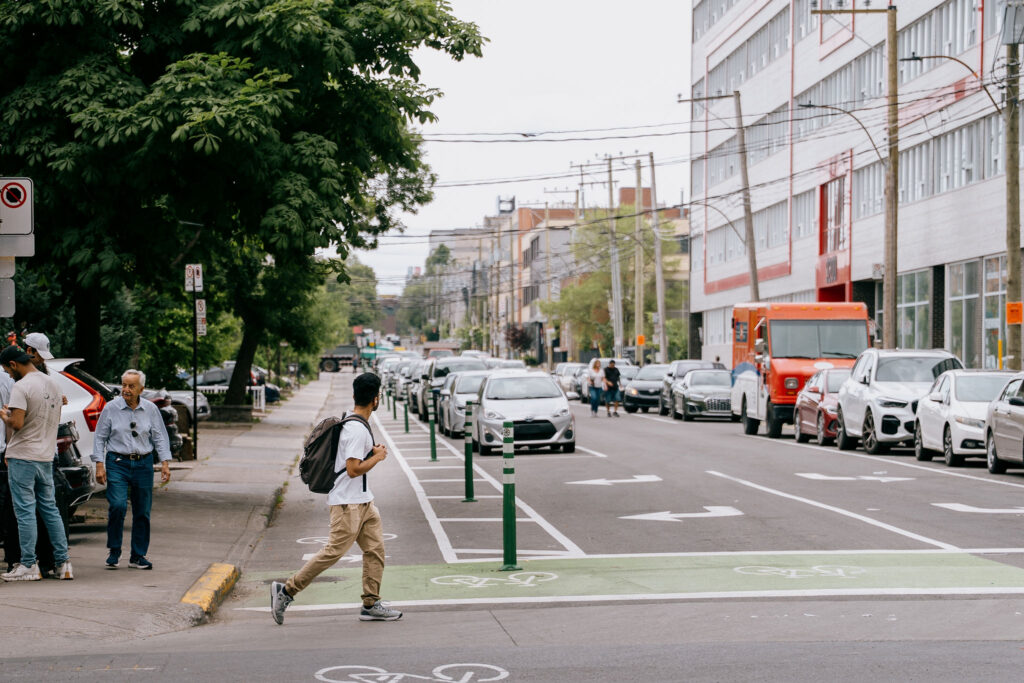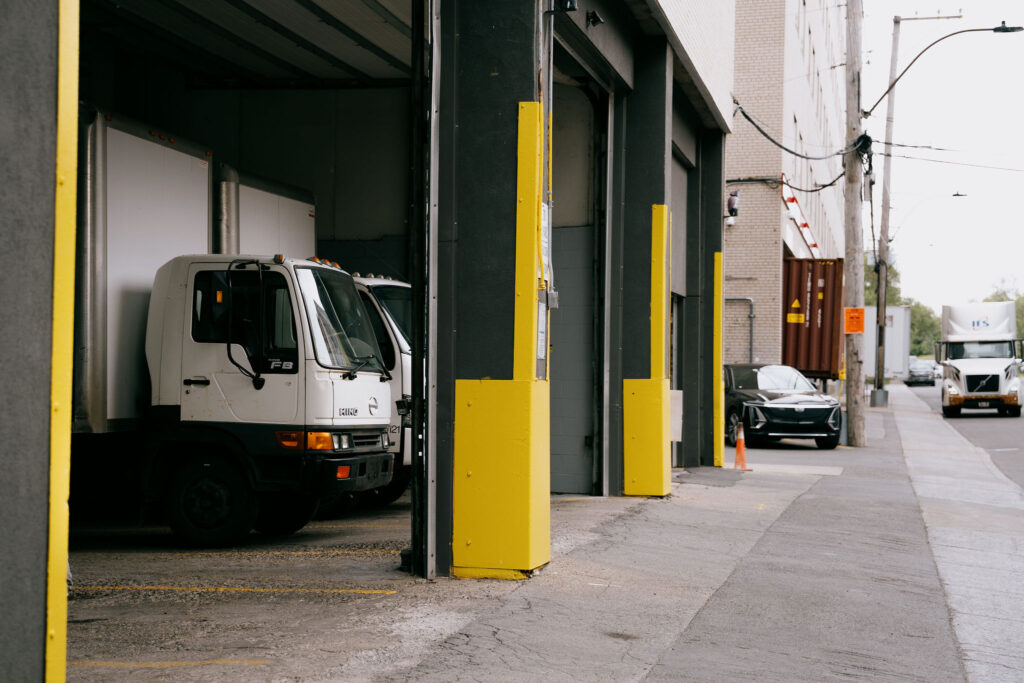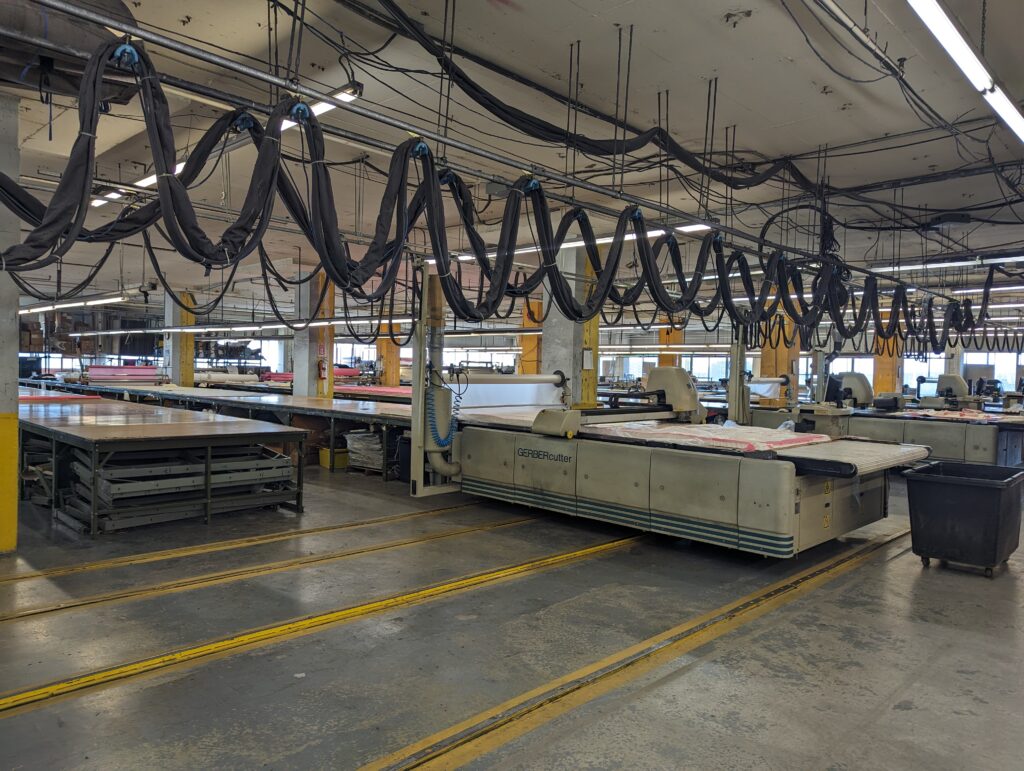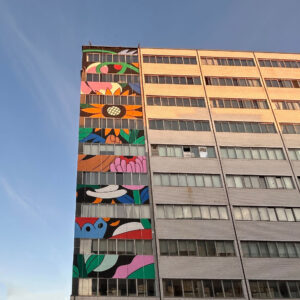NEWS FROM RIGHT HERE
October 3, 2025
Urban Logistics: The Need for Coherence
Every day, tens of thousands of truck deliveries take place in Montreal. Whether carrying raw materials or finished products, the presence of trucks in dense urban areas presents significant challenges. Urban logistics encompasses all activities aimed at organizing this flow. Its goal: to strike a balance between economic development, environmental preservation, and quality of life—including ensuring that pedestrians and cyclists can move safely through the city.
Impossible, you say? For Carolyn Kelly Dorais, an urban designer at Zaraté + Lavigne and a member of the Mobility Committee of SDC District Central, anything is possible. The key: focusing on consistency and communication.
The development of a city is guided by several planning tools, including an urban and mobility plan (UMP) and an urban logistics action plan, alongside a multitude of locally focused plans, such as Ahuntsic-Cartierville’s transportation plan and economic development plan. From Carolyn Kelly Dorais’s perspective, coherence across all these tools is essential if the goal is to gain buy-in and achieve established targets.
“When on one hand,” she argues, “we say we want to preserve the industrial heritage of a sector and maintain its mix of uses, and on the other hand talk about drastically restricting an activity essential to maintaining the economic fabric, like trucking, it inevitably raises questions. To embrace change, people need to understand the logic behind the actions being taken. That’s why coherence is crucial.” Urban logistics is no exception.
Currently, the measures outlined in Montreal’s 2025–2027 Urban Logistics Action Plan point toward an increased regulation of trucking and delivery activities. Some areas of District Central would be affected by the planned actions. However, the plan does not specify how the proposed restrictions align with the territory’s economic priorities, including supporting urban manufacturing and business-to-business (B2B) economic activity.
How these measures align with those planned for active mobility—particularly under the UMP and the District Central Local Planning Program (PPU)—is also not addressed. Although the North–South bike path was part of the intentions outlined in the local transportation plan, the choice of its final route and its rushed implementation in an industrial and commercial area of District Central, without consulting the community, highlighted the risks created by this shortcoming.

Carolyn Kelly-Dorais at the Mobility Committee of the SDC District Central with Lorelei L’Affeter and Helene Veilleux.
Without communication, there’s no way forward
For Carolyn Kelly Dorais, the tensions revealed by the rollout of the new bike path could have been avoided with an integrated, concerted approach. “Even if its implementation comes from good intentions, the new bike path was not coordinated with other planning tools. You cannot install a bike path to today’s standards in a neighborhood built in another era and according to different norms—especially if you want to preserve the existing built heritage. You need to take the time to assess its impact and feasibility,” she says. “Without coherent urban logistics, local businesses struggle to operate efficiently. This compromises not only their competitiveness, but also our collective ability to produce locally, preserve employment zones, and strengthen the territory’s economic autonomy.”
In the opinion of the urban design specialist, successful coexistence depends first and foremost on communication. “Consultations,” she says, “should not be limited to establishing a vision. They must extend from the design of action plans through to their implementation. Leaving out the insights of certain stakeholders at different stages of a project is a mistake—it undermines the development of environments that are both safe and economically viable, which is ultimately what everyone wants.”
What’s more, she believes that ignoring the perspectives of certain stakeholders can eventually convince them that they no longer have a place in the urban landscape. “When one of the essential elements of our business is put on trial, when controls are tightened to the point of impacting our profitability, and when public spaces are redesigned without considering the effects on our work, it’s only natural to wonder whether our presence is still welcome.”
The solution, according to Carolyn Kelly Dorais? “In the spirit of a local, resilient economy, we need to ensure a future for urban manufacturing. That requires listening, agreeing on a long-term vision, and determining the short- and medium-term actions needed in urban logistics to achieve the desired balance. Coherence is essential—especially, she stresses, if Quebec and Canada want to reclaim their industrial capacity and be equipped to face today’s economic challenges.”
Written by : Guylaine Boucher
Redesigning the city: the challenge facing District Central
Business parks, tomorrow. That was the theme that brought together economic stakeholders from the Brittany region on December 2. On this occasion, Hélène Veilleux, Executive Director of the SDC District…
Read MoreA Look Back at Our 2025 Year-End Cocktail
On November 26, the District Central community gathered at Brasserie Silo to celebrate the close of a year filled with strong collaborations, impactful projects, and collective achievements. This festive evening…
Read MoreA New Sculptural Mural in District Central
A unique new mural with a sculptural component is well worth a visit in District Central. The artwork, titled Ligne de vie urbaine, was created by Montreal-based artist DALKHAFINE and…
Read More





